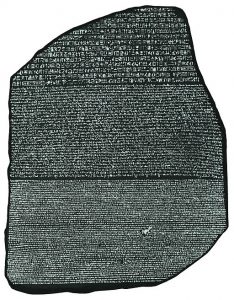
Noseman is having a headache and as an old-school hypochondriac he goes to see his doctor. His doctor is quite worried and makes an appointment with a radiologist for Noseman to get a CT scan.
Continue reading “Understanding the Maths of Computed Tomography (CT) scans”
Category: R
Posts with R code
Check Machin-like Formulae with Arbitrary-Precision Arithmetic
Happy New Year to all of you! Let us start the year with something for your inner maths nerd 🙂

Continue reading “Check Machin-like Formulae with Arbitrary-Precision Arithmetic”
Clustering the Bible

During this time of year, there is obviously a lot of talk about the Bible. As most people know the New Testament comprises four different Gospels written by anonymous authors 40 to 70 years after Jesus’ supposed crucifixion.
Unfortunately, we have lost all of the originals but only retained copies of copies of copies (and so on) which date back hundreds of years after they were written in all kinds of different versions (renowned Biblical scholar Professor Bart Ehrmann states that there are more versions of the New Testament than there are words in the New Testament). Just as a fun fact: there are many more Gospels but only those four were included in the “official” Bible.
Continue reading “Clustering the Bible”
Your AI journey… and Happy Holidays!

I want to draw your attention to a very valuable (and short!) whitepaper from my colleague, Professor Andrew Ng, where he shares important insights on how to lead companies into the AI era.
Continue reading “Your AI journey… and Happy Holidays!”
Learning R: A Gentle Introduction to Higher-Order Functions

Have you ever thought about why the definition of a function in R is different from many other programming languages? The part that causes the biggest difficulties (especially for beginners of R) is that you state the name of the function at the beginning and use the assignment operator – as if functions were like any other data type, like vectors, matrices or data frames…
Continue reading “Learning R: A Gentle Introduction to Higher-Order Functions”
Intuition for Principal Component Analysis (PCA)

Principal Component Analysis (PCA) is a dimension-reduction method that can be used to reduce a large set of (often correlated) variables into a smaller set of (uncorrelated) variables, called principal components, which still contain most of the information.
PCA is a concept that is traditionally hard to grasp so instead of giving you the n’th mathematical derivation I will provide you with some intuition.
Continue reading “Intuition for Principal Component Analysis (PCA)”
Why R for Data Science – and Not Python!

There are literally hundreds of programming languages out there, e.g. the whole alphabet of one letter programming languages is taken. In the area of data science, there are two big contenders: R and Python. Now, why is this blog about R and not Python?
Continue reading “Why R for Data Science – and Not Python!”
OneR – Fascinating Insights through Simple Rules

We already saw the power of the OneR package in the preceding post, One Rule (OneR) Machine Learning Classification in under One Minute. Here we want to give some more examples to gain some fascinating, often counter-intuitive, insights.
Continue reading “OneR – Fascinating Insights through Simple Rules”
One Rule (OneR) Machine Learning Classification in under One Minute

Here I give a very short introduction on how to use the OneR Machine Learning package for the hurried, so buckle up!
Continue reading “One Rule (OneR) Machine Learning Classification in under One Minute”
